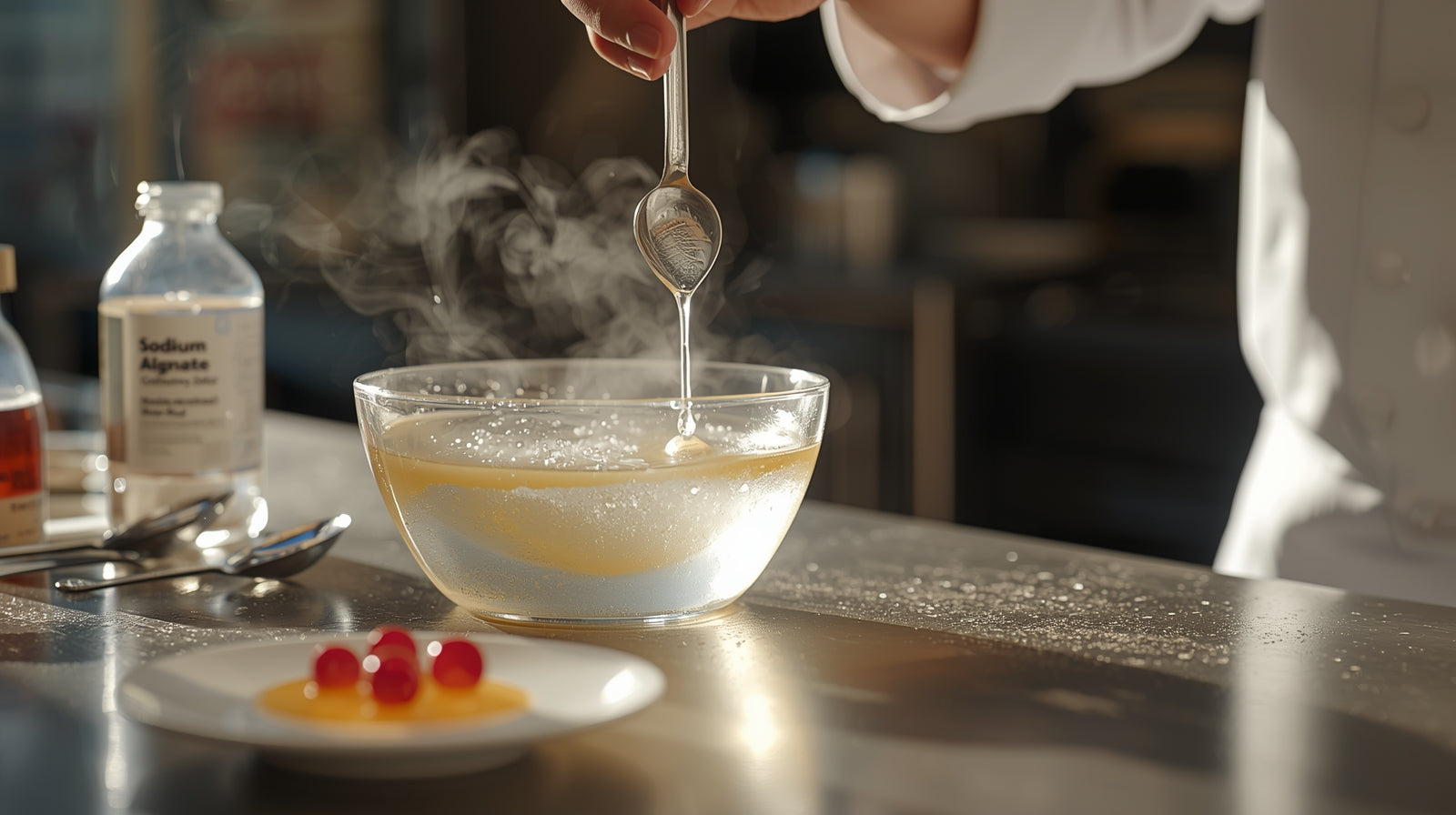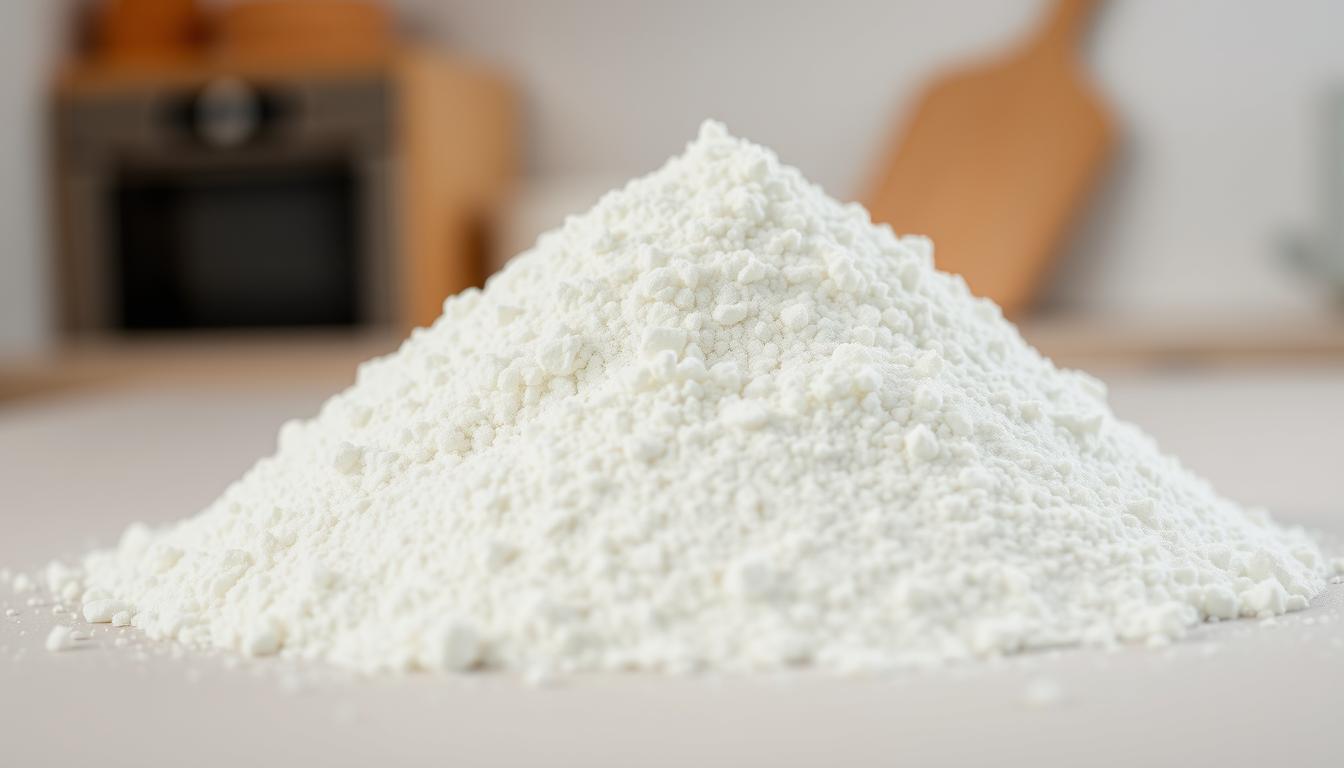
What is Calcium Alginate?
SUBSCRIBE TO OUR BLOG
Promotions, new products, and recipes.
What You Will Learn:
-
What calcium alginate is and how it’s made from natural brown seaweed, including its key components like alginic acid and calcium salts.
-
How calcium alginate works in wound healing, from gel formation via the “egg-box model” to maintaining a moist healing environment.
-
The types of wounds best suited for calcium alginate dressings, including diabetic ulcers, pressure sores, and post-surgical wounds.
-
Best practices for using calcium alginate, such as pairing it with secondary dressings and knowing when to change it.
-
Available brands and product options, along with tips on purchasing for both clinical and home care use.
Calcium alginate is a versatile wound care material derived from natural seaweed and widely utilized in modern healthcare. Known for its ability to create a moist environment, it plays a critical role in promoting the healing process for a variety of wounds. From diabetic ulcers to surgical wounds, this material has revolutionized wound management by offering a highly absorbent and flexible solution for diverse medical needs.
Formulated as a calcium salt of alginic acid, calcium alginate is particularly valued for its absorption capacity and gel formation when in contact with wound fluid. Its ability to handle large amounts of exudate while ensuring wound protection makes it a preferred choice among healthcare professionals. Whether addressing chronic wounds or first aid needs, calcium alginate continues to provide an optimal solution for patients across the United States and beyond.
Understanding Calcium Alginate and Its Composition
The Role of Natural Seaweed and Alginic Acid
Calcium alginate is derived from brown seaweed, a renewable natural resource that contains alginic acid within its cell walls. This alginic acid is a key component in the production of calcium alginate, providing it with unique properties that aid in wound care. The composition also includes calcium salt, sodium salt, and divalent cations, which contribute to the material's ability to absorb wound fluid and maintain a moist wound environment. These elements make calcium alginate a standout material in wound management and personal care.
Alginic acid itself consists of guluronic acid, mannuronic acid, and d-mannuronic acid. These components are critical in forming the gel-like structure of calcium alginate, which provides flexibility and tensile strength while conforming to the wound site. This combination of natural and synthetic elements ensures that calcium alginate delivers effective wound healing properties while being safe and biocompatible for patients. You also may be interested in learning more about the properties of sodium alginate.
How the Egg-Box Model Explains Gel Formation
The unique properties of calcium alginate can be explained by the egg-box model, a scientific concept that describes its gel formation process. When calcium ions bind with the alginate matrix, they create a hydrophilic gel that can hold large amounts of wound exudate. This structure is both strong and flexible, ensuring that the dressing can adapt to irregularly shaped wounds while maintaining its integrity during use.
The egg-box model illustrates how the molecular interactions between calcium ions and alginic acid result in gel formation, which is essential for the material's absorption capacity. This hydrophilic gel not only supports the moist healing environment but also helps in autolytic debridement, a natural process where dead tissue is broken down and removed from the wound surface.
Applications of Calcium Alginate Wound Dressings
Effective for Various Wound Types
Calcium alginate wound dressings are highly versatile and effective for treating a range of wound types. They are particularly suitable for pressure ulcers, diabetic ulcers, and venous ulcers, which often require a dressing that can manage significant wound exudate. These dressings are also ideal for full-thickness wounds and irregularly shaped wounds, as their conformable pad design allows them to adapt to the wound area effectively.
In addition, calcium alginate dressings are commonly recommended for donor sites and postoperative wounds. These types of wounds benefit from the material's ability to create a moist healing environment, which accelerates the healing process while minimizing discomfort for the patient. By addressing various wound care needs, calcium alginate has become an essential tool for healthcare professionals worldwide.
Use in Chronic Wound Management
Chronic wounds, such as arterial ulcers and pressure sores, pose significant challenges for wound management. Calcium alginate dressings offer an effective solution by maintaining a moist wound environment that supports healing. This is especially important for conditions like diabetic foot ulcers, where wound protection and moisture retention are critical to preventing further complications.
The ability of calcium alginate to promote autolytic debridement and absorb large amounts of wound fluid makes it a preferred choice for managing chronic wounds. Its compatibility with other wound care products, such as foam dressings and silver dressings, further enhances its effectiveness in creating an optimal wound healing environment. These features make calcium alginate an indispensable part of chronic wound care strategies in the United States and beyond.
Benefits of Calcium Alginate in Wound Healing
Features Supporting the Healing Process
One of the standout features of calcium alginate is its high absorption capacity, which allows it to manage wound exudate effectively. This is particularly beneficial for wounds that produce large amounts of fluid, as the dressing can keep the wound bed clean and free from excess moisture. By maintaining a balanced moist environment, calcium alginate supports the natural healing process and reduces the risk of infection.
Calcium alginate also promotes autolytic debridement, a process that helps remove dead or damaged tissue from the wound area. This not only accelerates the healing process but also prepares the wound bed for further treatments if needed. Additionally, the material's ability to create a protective barrier around the wound site ensures that the area remains shielded from external contaminants.
Use with Secondary Dressings
For optimal effectiveness, calcium alginate dressings are often paired with secondary dressings such as foam dressings or silver dressings. These secondary layers enhance the absorption capacity of the primary dressing while providing additional wound protection. This combination is particularly useful for highly exudative wounds, where managing large amounts of wound fluid is crucial to prevent maceration and promote healing.
The use of secondary dressings also ensures that the calcium alginate remains in place, even on irregularly shaped wounds or areas subject to movement. This stability is essential for maintaining a consistent moist wound environment, which is a key factor in successful wound healing. Together, calcium alginate and its secondary dressings offer a comprehensive solution for effective wound management.
Specific Products and Brands in Wound Management
Popular Calcium Alginate Products
Several well-known brands offer high-quality calcium alginate products for wound care. Maxorb and Maxorb II by Hollister Incorporated are among the most popular options, known for their superior absorption capacity and conformable pad design. These products are widely used by healthcare providers in the United States for both clinical and home care applications.
Other trusted manufacturers include Amerx Health Care Corp and Dermarite Industries, both of which produce calcium alginate dressings tailored for various wound types. Cardinal Health also offers a range of calcium alginate products that are designed to meet the needs of healthcare professionals and patients alike. These brands ensure that customers receive reliable, effective solutions for their wound care needs.
Key Product Information
Calcium alginate dressings typically come with a package insert that provides detailed product information and instructions for use. This ensures that healthcare professionals and caregivers can apply the dressing correctly, maximizing its benefits. The tensile strength and conformable design of these dressings make them suitable for a wide range of applications, from chronic wound management to first aid.
Ordering information is also readily available, with many suppliers offering free shipping and excellent customer service. This accessibility makes it easier for patients and caregivers to obtain the medical supplies they need, ensuring the best experience for everyone involved. By combining high-quality products with user-friendly features, calcium alginate continues to set the standard in wound care.
The Role of Calcium Alginate in Modern Healthcare
Support from Healthcare Professionals
Calcium alginate has been extensively studied in clinical trials, demonstrating its effectiveness in advancing wound healing techniques. Healthcare professionals frequently prescribe it for managing chronic wounds and diabetic ulcers, recognizing its ability to provide a moist healing environment and support tissue regeneration. This widespread use underscores the material's importance in modern wound care practices.
In the United States, calcium alginate is a key component of many wound management protocols, helping to improve outcomes for patients with complex medical needs. Its versatility and reliability make it a valuable tool for healthcare providers working in both acute and long-term care settings. By leveraging the unique properties of calcium alginate, clinicians can deliver better care and enhance the healing process for their patients. For another alginate variant used in the food industry, see our potassium alginate.
Accessibility for Personal and Home Care
Calcium alginate dressings are not only used in clinical settings but are also accessible for personal and home care applications. Many suppliers offer convenient online ordering options, complete with free shipping and responsive customer service. This ensures that patients and caregivers can easily access the medical supplies they need without unnecessary delays.
By providing high-quality products and excellent customer service, suppliers ensure that patients receive the best experience possible. This accessibility has made calcium alginate a trusted choice for wound care across various settings, from hospitals to home care environments. Its role in promoting effective wound healing continues to make a significant impact in the healthcare industry.
Key Insights on Calcium Alginate and Wound Healing
Calcium alginate has emerged as a vital component in wound care, offering unique benefits that cater to a wide range of medical needs. Its ability to maintain a moist healing environment and absorb wound exudate makes it an indispensable tool for managing various types of wounds, including diabetic ulcers, pressure sores, and venous ulcers. By promoting autolytic debridement and protecting the wound bed, calcium alginate helps accelerate the healing process and reduces the risk of infection, making it a preferred choice for healthcare professionals worldwide.
The material's versatility extends beyond clinical settings, with applications in home care and personal care becoming increasingly common. Thanks to its compatibility with secondary dressings like foam dressings and silver dressings, calcium alginate can be tailored to meet specific wound care needs. Products from trusted brands like Hollister Incorporated, Cardinal Health, and Dermarite Industries further enhance its accessibility, ensuring patients and caregivers have reliable solutions at their fingertips. With its proven efficacy in clinical trials and widespread use in the United States, calcium alginate continues to set the gold standard in modern wound management.
FAQs
1. What is calcium alginate?
Calcium alginate is a wound dressing material made from natural brown seaweed. It is valued for its ability to absorb wound fluid and create a moist healing environment.
2. How does calcium alginate work in wound healing?
When calcium alginate contacts wound exudate, it forms a soft gel that keeps the wound moist, supports autolytic debridement, and protects the wound bed from contamination.
3. What types of wounds are best treated with calcium alginate?
It is commonly used for diabetic ulcers, pressure sores, venous ulcers, surgical wounds, donor sites, and other moderate to heavily exudating wounds.
4. Can calcium alginate be used on dry wounds?
No. Calcium alginate requires moisture to activate its gelling properties and is best for wounds with moderate to heavy exudate. For dry wounds, a different dressing type is recommended.
5. Is calcium alginate safe for people with allergies?
Yes, calcium alginate is derived from seaweed and is generally hypoallergenic, though individuals with seaweed allergies should consult a healthcare professional before use.
6. How often should calcium alginate dressings be changed?
Dressing change frequency depends on the amount of wound drainage, typically every 1–3 days, or when the dressing becomes saturated.
7. Can calcium alginate be used with other dressings?
Yes. It is often paired with secondary dressings like foam or silver dressings to enhance absorption and provide additional protection.
8. Does calcium alginate help prevent infection?
While it helps maintain a clean, moist environment that supports healing, it does not contain antimicrobial agents unless combined with silver or other additives.
9. Is calcium alginate suitable for home wound care?
Yes. Many brands offer calcium alginate dressings for both clinical and home use, but it should be applied under the guidance of a healthcare provider.
10. Where can I buy calcium alginate dressings?
They are available through medical supply stores, pharmacies, and online retailers, with options from well-known brands like Hollister, Cardinal Health, and Dermarite.

|
About the Author Ed is the founder of Cape Crystal Brands, editor of the Beginner’s Guide to Hydrocolloids, and a passionate advocate for making food science accessible to all. Discover premium ingredients, expert resources, and free formulation tools at capecrystalbrands.com/tools. — Ed |
Enjoyed this post? Subscribe to The Crystal Scoop
Food-science tips, ingredient know-how, and recipes. No spam—unsubscribe anytime.
- Choosing a selection results in a full page refresh.



